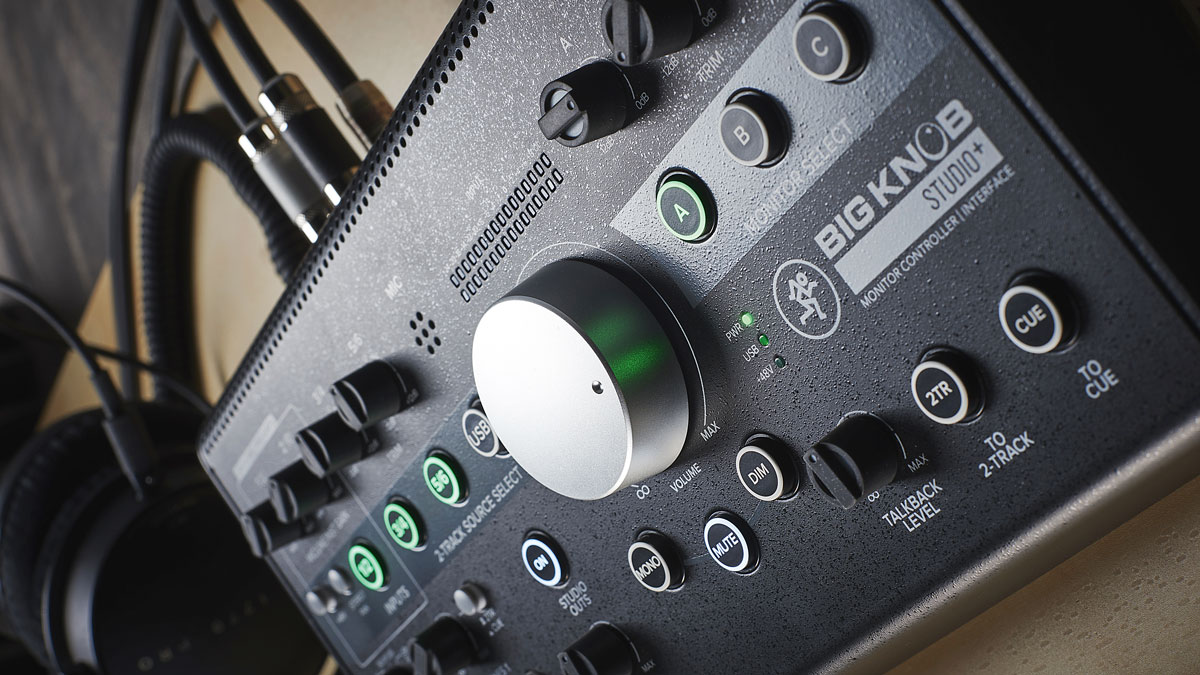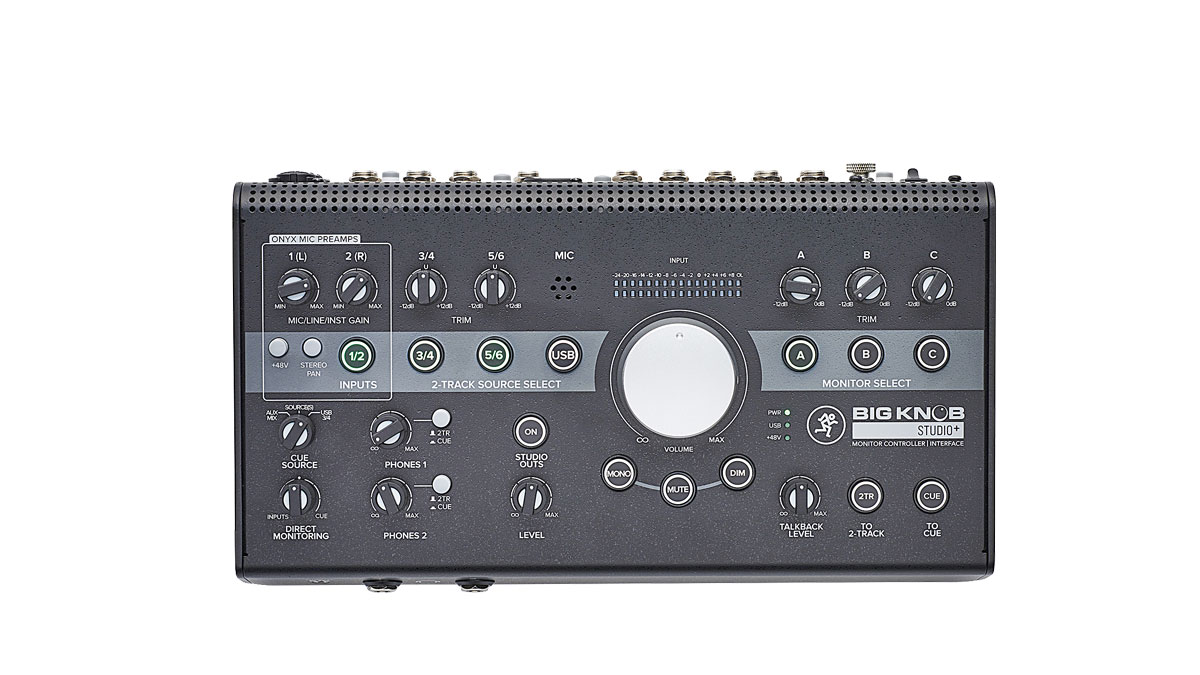MusicRadar Verdict
A new lease of life for Mackie’s Big Knob: adding Onyx mic pres and USB audio interfacing makes it a more integrated device.
Pros
- +
Onyx mic pres
- +
Solid build.
- +
Backlit buttons.
- +
Familiar layout and features.
Cons
- -
Metering a bit limited.
MusicRadar's got your back
Mackie’s original Big Knob monitor controller is pretty much an industry standard.
Even so, with more than ten years on the clock, it’s time things moved on, and you now have three brand new designs to choose from - Passive, Studio and Studio+.
Although visually similar to its predecessor, the top of the range Big Knob Studio+ is in fact part monitor controller and part two-in/four-out USB audio interface. This is a logical progression but inevitably makes the signal flow a bit more complex (more on that shortly). Connectivity-wise however, things are very familiar. The Studio+ can service three sets of monitors and two pairs of headphones, and all five include individual trim or level controls. There’s also a dedicated Studio output with level and on/off button that could feed either a dedicated headphone distribution amp or live area monitoring. Finally, there’s also a main two-track output (+4/-10dB). All outputs are 1/4” jacks wired for balanced and unbalanced use.
You get eight inputs in total. Two pairs (labelled 3/4 and 5/6) provide line level input, with 5/6 replicated on the front in 1/8” jack format. Inputs 1 and 2 are Onyx mic pres and these combi connectors can handle mic, line and instrument signals and include global phantom power. A further pair of inputs (Aux Mix/Cue In) are designed solely to feed the cue bus and could be used to source an alternative cue mix (from a separate mixer for example). On the subject of inputs, Studio+ includes not only an integrated talkback mic but also a dedicated XLR mic input. Both can be activated via foot switch. One thing missing, though, is the original’s dedicated turntable input.

Again, adding an interface makes the Studio+ signal flow both more capable but also more complex. Still, the key concept remains the same, namely one stereo monitoring bus (2-Track), which feeds the monitors, and one stereo cue bus (Cue). The 2-Track bus has individual switches to source the stereo inputs in pairs (1/2, 3/4 and 5/6) plus interface outputs 1 and 2 (USB), with output controlled via the large Volume knob and associated Mono, Mute and Dim switches.
The Cue bus has three input options - the physical Aux In, Source (whatever 2-Track sources are selected, minus inputs 1 and 2), and USB outputs 3/4 from your DAW. For zero latency monitoring, the Cue mix can be blended with inputs 1 and 2 using the Direct Monitoring knob, and each Phone’s output can select independently between Cue or 2-Track. Finally, for further flexibility, the USB input to your DAW can receive either the Mic inputs or the blend from the 2-Track bus.
The backlit buttons are a major bonus, but metering could be more extensive (ie output and input options). Overall, the Big Knob Studio+ is much more powerful than its predecessor, with a feature set that gives a unique combo of monitoring, talkback and interfacing.
Want all the hottest music and gear news, reviews, deals, features and more, direct to your inbox? Sign up here.
Jon is a London based platinum award winning mixer, producer, composer and club remixer with a diverse CV that spans dance, pop, rock and music for media. He’s also a long term contributor to MusicRadar's music technology tutorials and reviews. Whether working alone or collaborating he usually handles final mixdowns, so you’ll also find MusicRadar peppered with his handy mixing tips.

